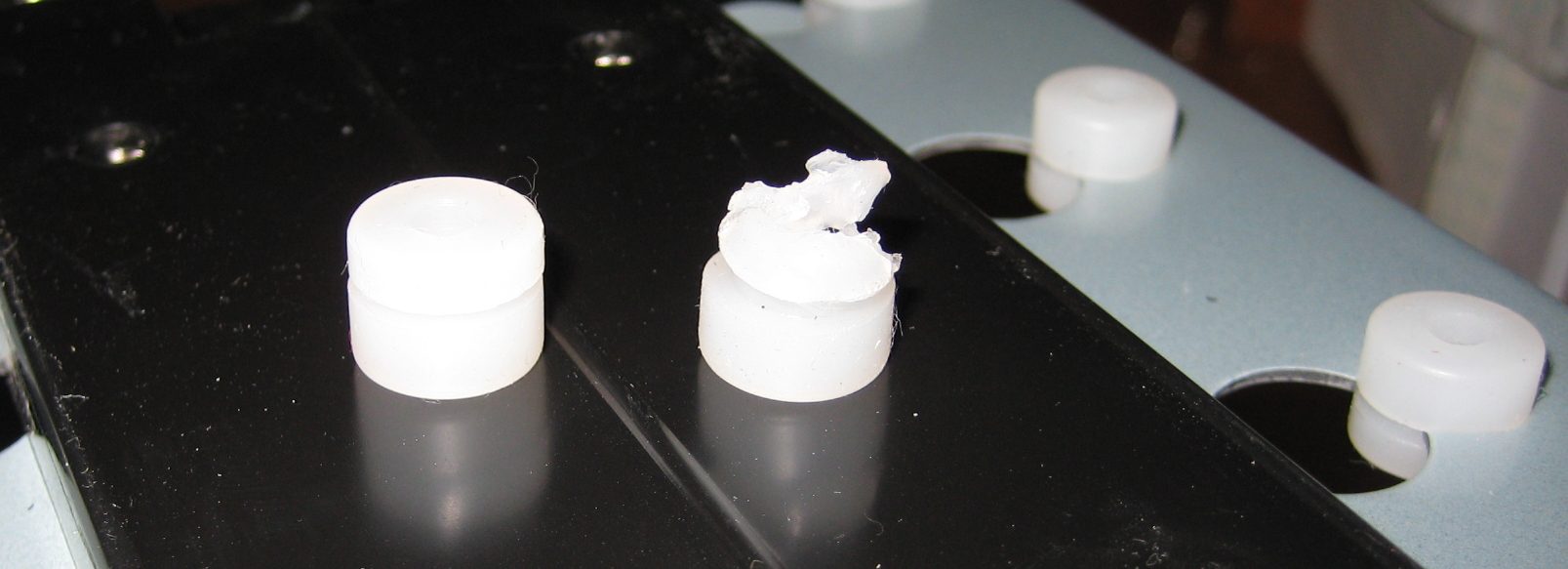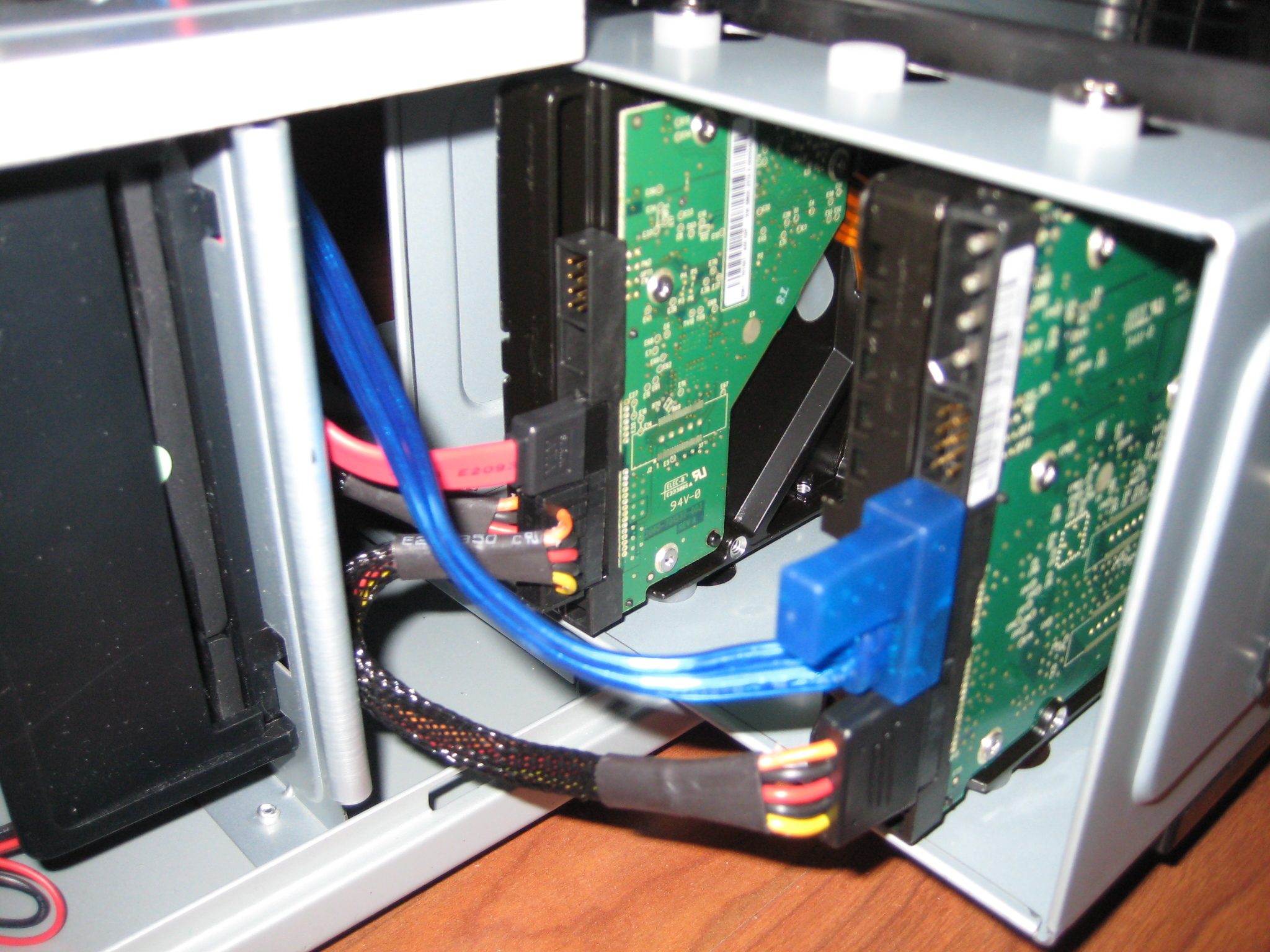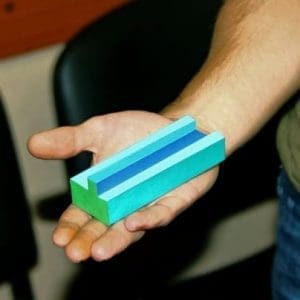See also …
Ok, here’s where we put the rest of these boxes, switches, wires, and other assorted doo dads in their place. Again, the witty reader will note that I am following along with Jeff Atwood’s Build a PC posts from last summer, just adding some color commentary and my own personal notes.
Hard Drives, Optical Drives
- When disassembling the case, I found one of the silicon grommets on the lower drive cage was a bit munged. Antec is great, they think of everything – the bag o’ miscellaneous parts had a few spare ones.

- The drive cages in the Antec P182 are pretty sharp. Those silicon grommets are an anti-vibration feature. It took me a bit to figure out exactly how to install the actual drives – this picture should help …

- Note that I put my start-up Raptor in the first position, and the 500GB Caviar in the third position. I had talked to some folks about doubling up and mirroring for security, and I may still do that in the future – just leaving space, seems like the decent thing to do.
- I could have stayed consistent with the clean red SATA cables that came with the motherboard – but that blue cable from the Raptor box was just so cool looking …
Miscellaneous
- The P182 has USB and FireWire ports located up front – the cables for those are in the same bundle as the leads for the LEDS. The motherboard came with additional hardware to make these “visible” out of the back of the machine – more extra stuff to stash with the leftovers.
- There’s also a pair of wires for audio hookups – HD audio and AC’97. I found something on the motherboard for the HD Audio, but I’m drawing a blank on the AC’97 connector. I know it’s high-quality audio for something … ah well, a future project.
- For optical drives, I took an idea from the Tom’s Hardware walkthrough, and put in a pair of DVD-RWs.
- Supplying power to the fans and drives is just a question of picking out the right one from the myriad spilling out of the Corsair. The real trick was hiding the cables and closing up the case – an adventure in folding. There are plenty of tie-up options built in to the Antec, which made the task easier – it’s really a super case.
Final Thoughts
Well, now it’s finally ready to go. As noted last time, I know it boots – now I just need to download the Ubuntu Hardy Heron CD ISO and get installing. But that’s a different post – possibly. This blog is meant to be geared towards the application of technology to business, and vice versa – not a tech haven per se.
So what observations can I make as I survey the piles of spare parts and packing materials?
- Evolution is a Powerful Force for Change: The advancements made in something as mundane as the case that holds it all still delight me. Slide out drive cages, anti-vibration and noise reduction all over the place, and spaces to make cable management easier. If you haven’t looked at the guts of these machines lately, you will find that the “state of the art” never stopped innovating and improving.
- Standards-Based Hardware: Making the “Case” for Standards-Based Software? Ever since the days of the XT clones, these machines have been designed for interoperability with different parts manufacturers. Still, the wide variety of vendors, coupled with the degree of fit for all of these components – makes a strong value statement for available and accepted standards. When all manufacturers agree on the base requirements, and differentiate based on features, functionality, and price (all together), the result is higher-capability machines for a very reasonable price. Makes you want to do the same with all of the systems getting designed and built at work …





This Post Has 0 Comments